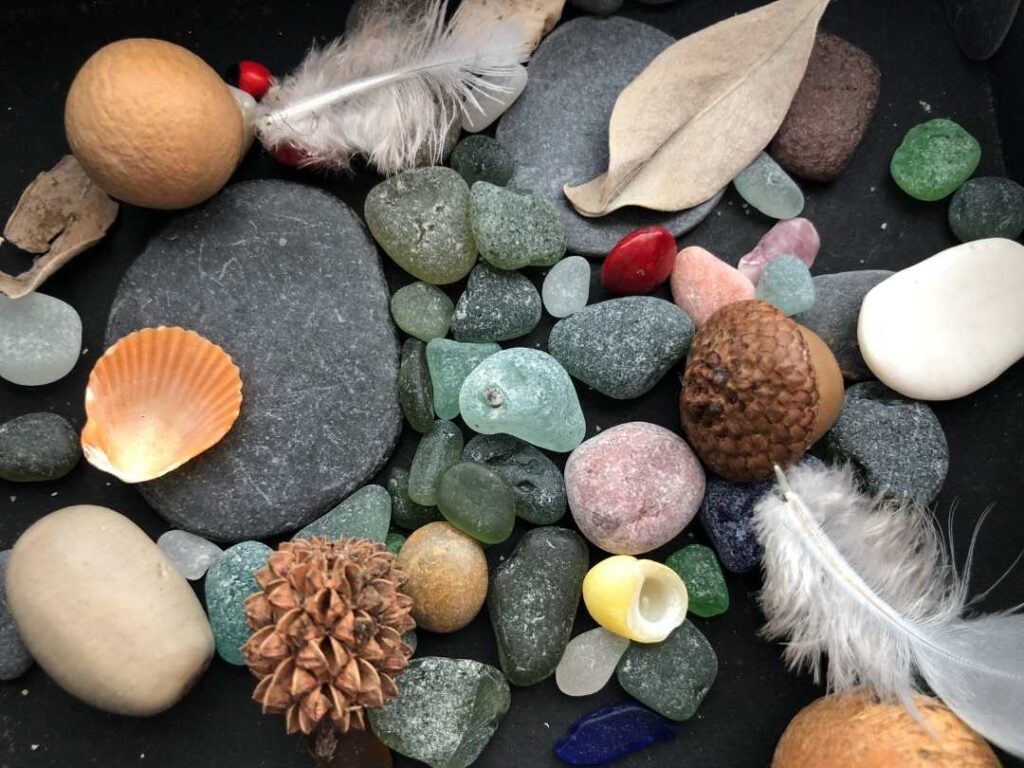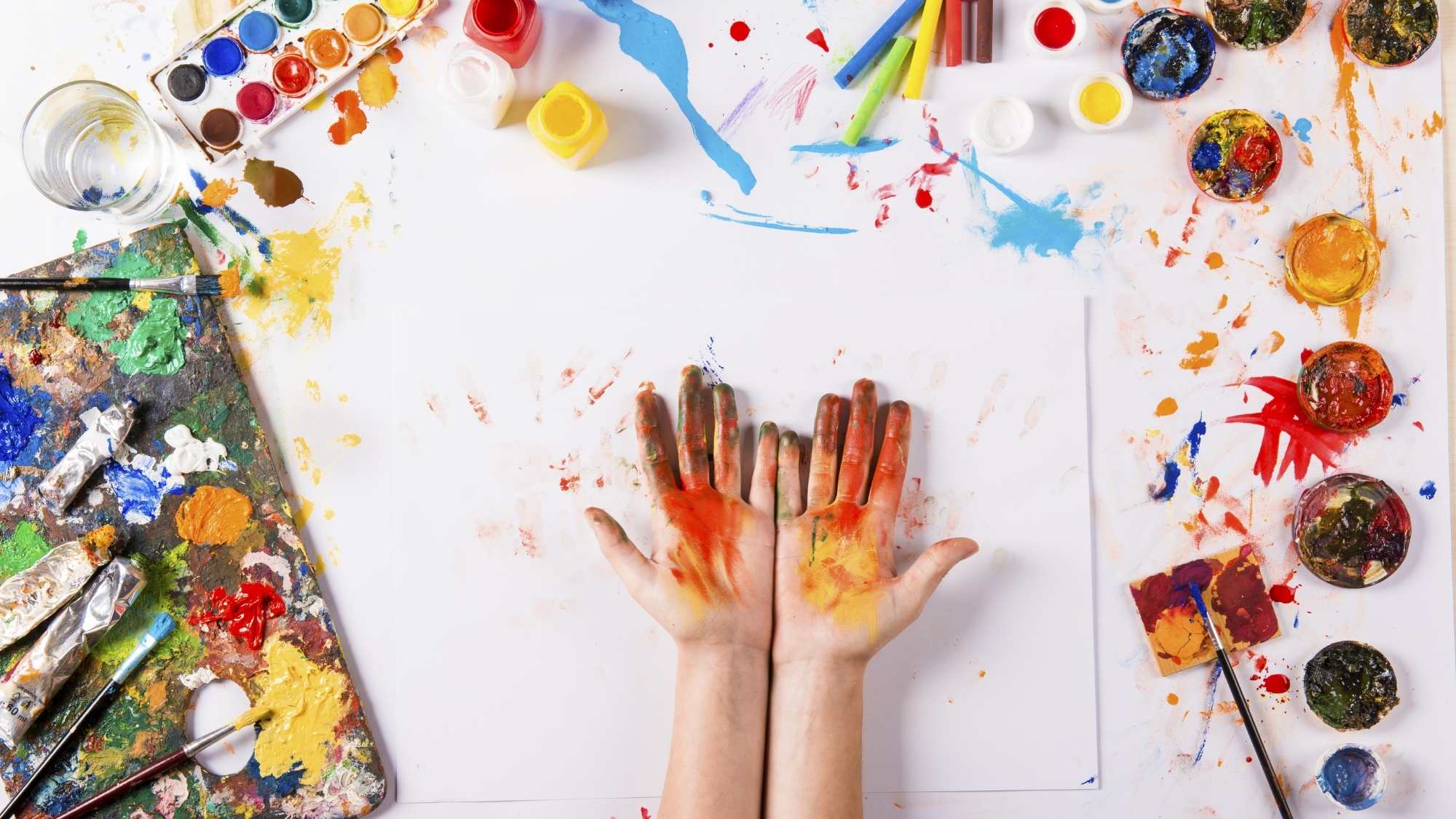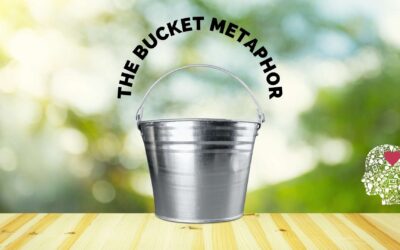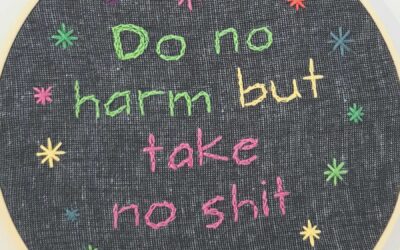Would you like to bring more creativity into your life? Perhaps you enjoyed art in childhood, and would love to reconnect with it? In this week’s guest blog, psychotherapist Karolina Christopher talks about how creative self care can support positive mental health, and suggests some simple ideas for your personal self care practice.
Art-making has a range of benefits for our emotional health and well-being. Many people would like to do something creative, but aren’t quite sure where to begin.
But creative activity is something that anyone can enjoy and benefit from, regardless of formal training or artistic skill.
Using the therapeutic arts isn’t about being an accomplished artist; instead, it’s about being attentive to your inner process – that is, your thoughts and feelings – as you create.
Art and Mental Health
Shaun McNiff (1992) talked about how art can be a kind of ‘medicine’ for the soul. In all ages and cultures, people have turned to the arts to express joy and sorrow, to celebrate success or to find solace in times of uncertainty. The simple process of art-making, when approached with curiosity and attentiveness, has healing properties for our mental health.
If you’re into mindfulness, you may have tried one of the colouring books for adults that are now widely available. The activity of colouring in provides order and structure for the mind, while giving you an element of choice as you pick your colours and the type of pens or crayons you prefer.
However, if you would like to expand your creative repertoire, many activities from the discipline of art therapy can be used for personal self-reflection.
Making art can help us unwind as we focus our attention fully on the task in hand. Creative activity promotes a state of flow (Csikszentmihalyi, 2008), which has a restorative impact on our well-being. Being in flow means being totally absorbed in what you are doing, in a way that makes the time fly past, and this releases stress relieving hormones that have a positive impact on our brains.
Doing something creative can also bring a sense of playfulness and experimentation into our lives. Often, a simple image tells the story of how we feel in a way that words cannot easily capture.
As we engage with the deeper meaning of our art work, we can find unexpected layers of emotion and explore new possibilities for our personal situation.
My Own Creative Journey
For many years, I longed to be creative, but memories of art lessons at school seemed to put obstacles in the way. I remember being frustrated and on the verge of tears in primary school just because I couldn’t get my painting to ‘look right.’ What also didn’t help was the teacher telling the class whose painting was ‘good’ (and, by omission, we gathered, whose wasn’t).
Discovering the therapeutic arts allowed me to let go of my perfectionism as I realised that doing art could be both fun and exciting. Art making is supposed to bring you joy – the joy of finding your creative voice and unique self-expression, while engaging with the sensory aspect of different materials and techniques.
I was inspired to embark on my own art therapy training so that I could integrate the creative arts in my psychotherapy practice. I was in creative heaven as I learnt about the benefits of art making for mental health, while also gaining a great deal of hands-on practice in the seven art forms: Art, sandtray, music, clay, drama, movement, and poetry.
While these are the most commonly used art forms, there are many other ways to use the arts therapeutically: embroidery, using objects from nature, and storytelling – to name but a few. A recent interest of mine is labyrinths and how they can be used for therapeutic healing and meditation as you follow their winding path towards the centre.
Using the arts for self-care can be a wonderful way of exploring your emotional states, process your feelings and find out what you need. Here are some simple ways to get started.
How to get started on your creative journey
Developing a creative practice doesn’t need to be complicated – here are two simple ways to get your started: art journaling and using natural objects.
Art Journaling

Keeping an art journal can be a great way to record how you are feeling day to day. You don’t need any expensive materials to begin. Get a regular note book – just make sure that the paper isn’t too thin – and some coloured pencils or crayons. Even a biro will do!
Liberate yourself from the pressure to create something aesthetically pleasing. A great ‘low stakes’ activity is to use lines and shapes. You will find that even simple mark making can express depths of feeling. You can experiment in a similar way with different colours.
Note how your hand wants to hold the pen or crayon, and what energy is present in your mark making – is it serene or more energetic? What does that say about how you feel? Tune into your bodily experience and express it on paper.
Spend some time reflecting on your image and note down any words that come up. You may wish to write a brief reflection at the end. You can also use this sentence: ‘I feel ____ and I need ____.’ Don’t overthink it, just jot down the first idea that enters your mind, and you may discover something you hadn’t thought about.
Don’t be afraid to draw whatever you like. People, places. It doesn’t matter what it looks like. Draw stick people if that helps, it’s the process that counts, not the results.
Add some speech bubbles and give the stick people some words. How are they feeling? What bothers them? What do they need to hear? How do you feel about them?
A fun twist can be to use an old book or novel as your journal. Drawing and colouring over printed text can be strangely satisfying. Just make sure that you haven’t picked up an unread novel by mistake!
Later on, you can get a sketch book, especially if you would like to use heavier materials such as water colour or felt tip pens.
Natural Objects

Arranging objects is a mindful exercise that helps us tune into ourselves. For this activity, you can use some items you have found outside. I am always collecting little stones and other natural objects on my walks. You may find a flower, some dry leaves or cones.
These items can be used to create patterns by laying them out on a tray or piece of fabric. Which ones are you attracted to? Some natural objects have a special kind of symmetry. They are known as fractals, and touching them or even just looking at them can have a calming influence on the brain (Joye, 2006). Again, you can note down words or sentences that come to mind, or draw something in your art journal.
What is Involved in Creative Arts Counselling?
Art therapy, or creative arts counselling (both are similar) is an established method for processing stress, trauma or grief. It is considered a somatic form of therapy as it engages both mind and body. Art therapy can help us connect with our deeper emotional process, and especially those experiences that do not translate easily into words alone (Malchiodi, 2020).
One of the reasons that art making is effective is that it activates the right side of the brain. During the creative process, the brain’s right hemisphere is active in a way that does not happen when we use verbal communication only. The right brain is emotional and imaginative; it holds our non-verbal memories (‘feeling’ memories) which can be expressed effortlessly through the arts.
Some common misconceptions about art therapy are that we must be ‘good at arts;’ that art therapy is only for those who have difficulty expressing themselves verbally: or that your image will be interpreted by the therapist who will analyse its ‘true meaning.’ None of these are true.
In creative arts counselling, different art forms are used in combination with talking therapy. The therapist helps the client reflect on, and find their own personal meaning in their image or other creative piece of work, so that the art image becomes a container for the inner process. This can be a life-enhancing, transformative experience.
For more tips on how to use the creative arts for self-care, or to book a session with me, please visit my website www.karolinachristopher.com.
References:
Csikszentmihalyi, M. (2008). Flow. The Psychology of Optimal Experience. New York: Harper Perennial Modern Classics.
Joye, Y. (2006). Some Reflections on the Relevance of Fractals for Art Therapy. The Arts in Psychotherapy 33, 143–147.
Malchiodi, C. (2020). Trauma and Expressive Arts Therapy. Brain, Body and Imagination in the Healing Process. London: Guilford Press.
McNiff, S. (1992). Art as Medicine. Creating a Therapy of the Imagination. London: Shambala.
Karolina Christopher specialises in helping individuals heal from relational trauma using creative, depth-oriented psychotherapy, counselling, and 1:1 coaching sessions. She is a UKCP-registered integrative psychotherapist.




